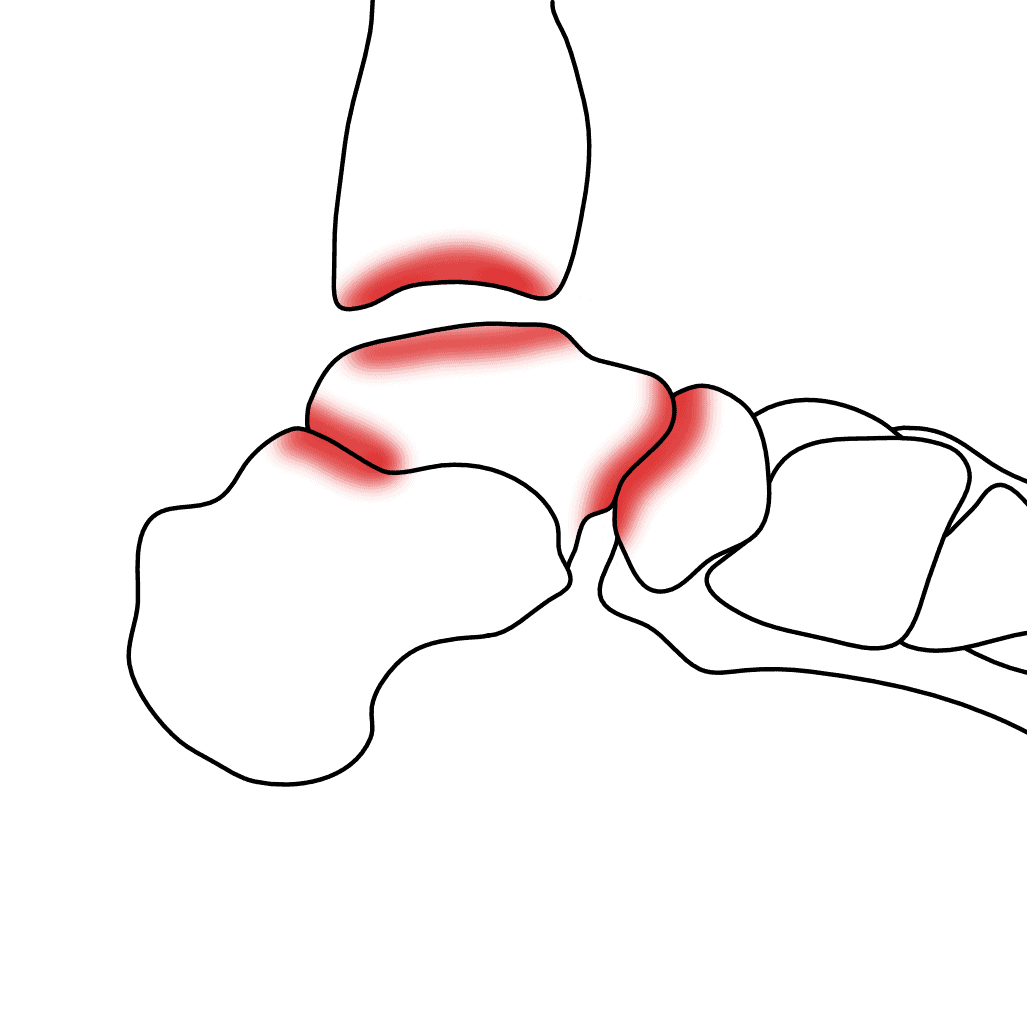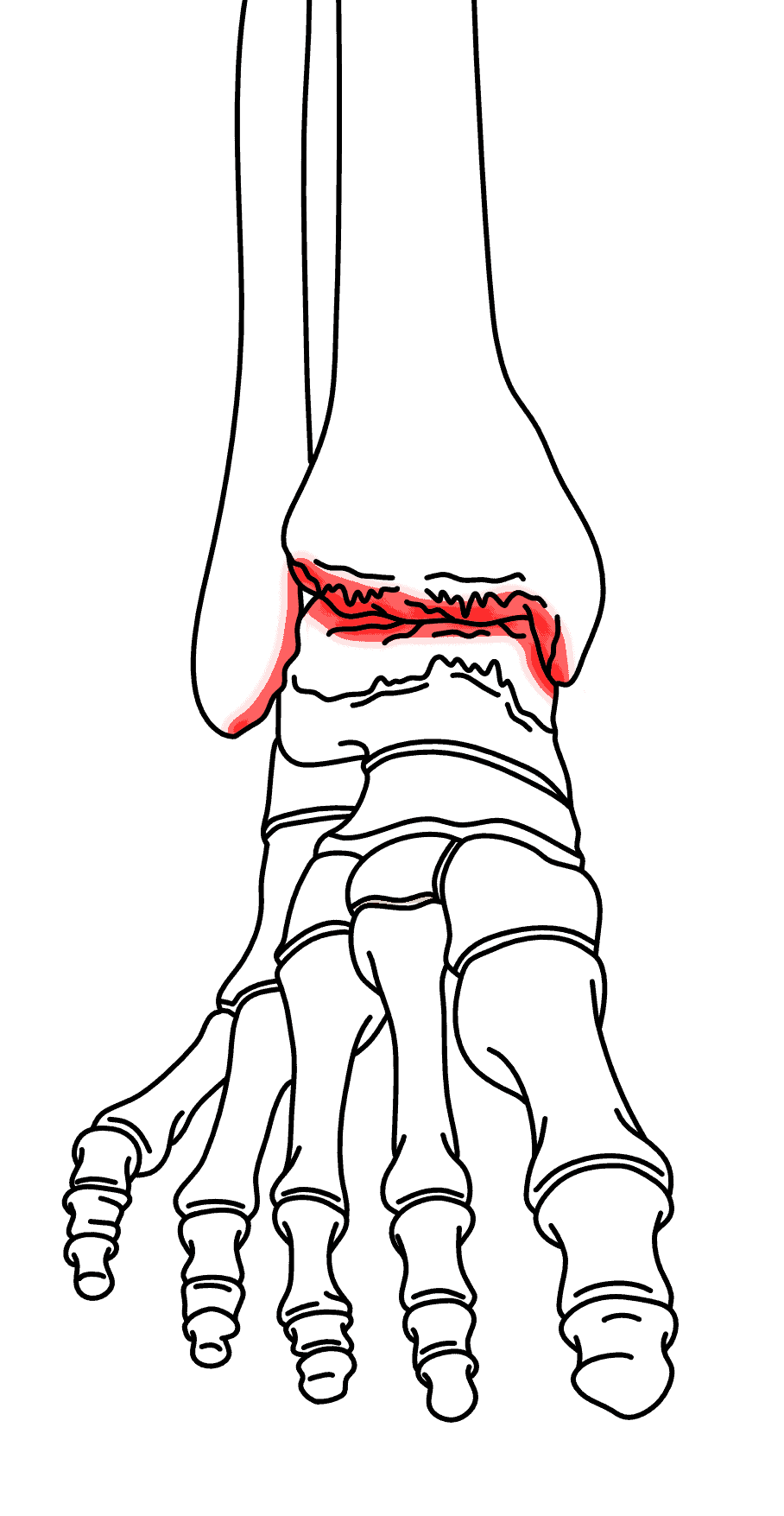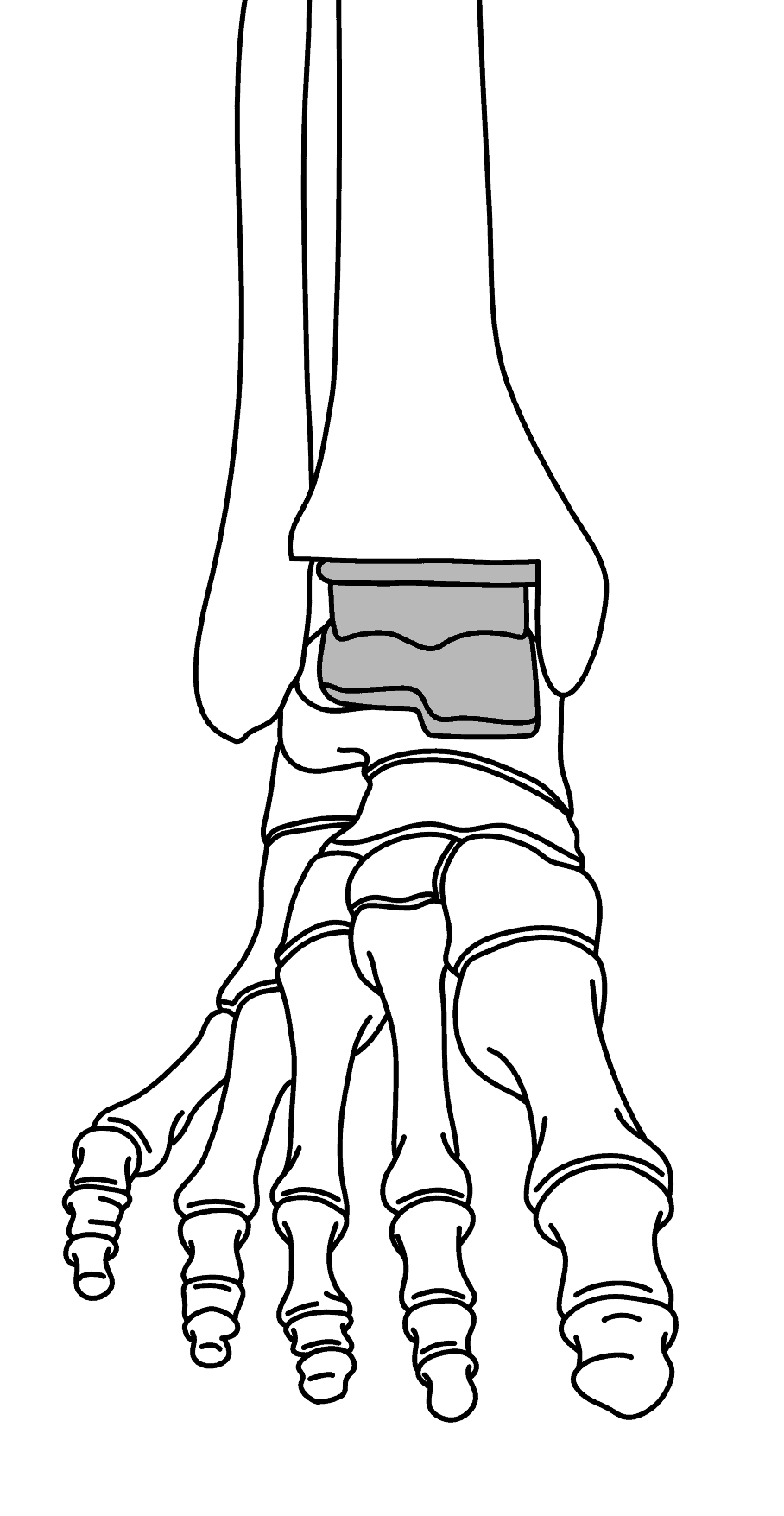Ankle joint arthrosis – once you have arthrosis in the ankle joint, you are well advised as a patient to inform yourself about possible treatment options. In this expert guidebook, by Prim. Dr. Norbert Freund, you will learn everything about the causes, symptoms as well as suitable treatment options for osteoarthritis of the ankle joint. Prim. Dr. Norbert Freund is head of the Department of Orthopedics & Orthopedic Surgery at the Hospital of the Sisters of Mercy in Ried. He explains when conservative therapies are appropriate and when he recommends surgery with Shark Screw®, a screw made from human bone, or other surgical treatments to his patients.
Reading time: 6 min
Author of the article: Dr. Norbert Freund
Expert in orthopedics and orthopedic surgery
Arthrosis of the ankle joint and its cause
Basically, the cause of arthrosis in the ankle joint can be distinguished between primary and secondary ankle joint arthrosis. “The cause of secondary osteoarthritis of the ankle in many cases is a lapsed fracture in the ankle joint. One speaks here also of a posttraumatic arthrosis, so the Arthrose expert Prim. Dr. Norbert Freund. However, ankle joint arthrosis can also occur as a result of incorrect stresses and untreated malpositions. In such cases, the condition is referred to as primary ankle joint arthrosis. Such deformities can be, for example, clubfeet, flat feet or bow or knock-knees. The hip and knee are affected by osteoarthritis much more frequently than the ankle.

What are the symptoms of arthrosisof the ankle joint?
The disease process of osteoarthritis in the ankle joint usually happens insidiously. If the symptoms are barely noticeable or not noticeable at all in the early stages, advanced ankle osteoarthritis can cause massive pain and swelling. In post-traumatic osteoarthritis of the ankle joint, symptoms may not appear until 10 years or even later after the accident. Signs of progressive ankle joint arthrosis are pain on start-up and a distinct pulling sensation in the area of the ankle joint.
Pain on exertion after long walks or hikes can also indicate arthrosis in the ankle joint. If you have persistent pain in your ankle, you should in any case consult an orthopedist to clarify the causes of your pain. Early therapy, conservative or surgical, is crucial for your personal well-being.
Experts for ankle pain
Treatment: Arthrosis in the ankle joint - what to do?
What to do if you have osteoarthritis in the ankle joint? A question that many patients suffering from osteoarthritis ask themselves. Whether conservative or surgical treatment is used depends on the stage of the osteoarthritis.
If osteoarthritis surgery is planned for deformities in the ankle joint, screws made from human bone have proven effective for this purpose. They are converted into the body’s own bone. If conservative therapy is possible, special shoe models or insoles usually help to alleviate the pain. Osteoarthritis in the ankle joint – what to do? “I recommend that those affected make an appointment with an expert in foot surgery. With him, it is important to clarify the cause and design a personal therapy concept.” So Prim. Dr. Norbert Freund from Austria.
First opinion or second opinion for ankle joint arthrosis
Conservative treatment
Conservative therapy can only be performed for ankle arthroses in which cartilage and bone do not yet show significant damage. The goal of conservative treatment is to preserve the ankle joint as long as possible and to stop the progression of osteoarthritis. Orthopedic insoles or made-to-measure shoes that support the rolling movement when walking can help. Physical therapy to relieve pain can also be helpful. Nutrition plays a major role in cartilage metabolism. Bandages can also be used to relieve the joint.
Ankle joint arthrosis surgery
Arthrosis of the ankle joint can only be treated conservatively in the early stages. If the osteoarthritis is advanced, surgery is often the only way to relieve the pain. There are some surgical techniques as well as surgical materials that can be used during surgery for osteoarthritis of the ankle joint. If a surgery is necessary, you as a patient should inform yourself sufficiently about the various surgical techniques. “At surgeries of arthrosis with severe deformities in the ankle joint we trust our patients to Shark Screw®, a Human bone screw. It has shown particularly good results & healing in our patients.” So Prim. Dr Norbert Freund. Here you can find a lecture by Prim. Dr. Norbert Freund on the Ankle joint arthrosis surgery with screws made of bone.
Surgical techniques
Ankle arthrodesis (joint fusion):
Ankle arthrodesis is called the standard treatment for osteoarthritis of the ankle joint and it means stiffening of the upper or lower ankle joint. The arthritic joint surfaces are de-cartilaged and subsequently joined with screws made from human bone. Due to the 100% natural bone material, patients have the best possible conditions for rapid healing. After the two bones have grown together, the foot can be fully loaded again, allowing pain-free walking once more.
Axle correction at the ankle joint (osteotomy):
This technique corrects misalignments in the foot or leg to correct joint misalignments. This allows the joint and the misloaded cartilage region to partially regenerate. The progression of osteoarthritis can thus be slowed down or prevented.
Ankle joint endoprosthesis
Prostheses for the ankle have been around since 1962 and have undergone continuous development. Today, we can draw on 20 years of experience in total ankle arthroplasty. But what are ankle joint endoprostheses made of? Basically, this is made up of 3 components: A rounded cap for the ankle bone roll, a plate that serves as the tibial joint surface & a freely movable sliding core that is attached to the tibia (shin bone). How is an ankle joint endoprosthesis inserted? Meist erfolgt dies über den vorderen, längsverlaufenden Zugang zum oberen Sprunggelenk. A sufficiently long skin incision is made to prevent the hooks from pulling on the soft tissue. Special alignment and sawing templates are used to set up the bone bed in the tibia & talus area accordingly. Since 2015, cutting blocks have also been produced individually for each patient from computed tomography data, which has increased implantation accuracy and reduced surgery times. Normally, the procedure is performed under regional anesthesia. Such an operation lasts on average between 90 and 120 minutes. This treatment option is not considered for severe soft tissue problems, ligament instabilities, gross deformities, infections, circulatory problems or bony defects. In case of loosening of prosthetic components, arthrodesis of the ankle joint is performed as a retraction operation.


Ankle joint endoprosthesis
Ankle joint arthrosis experience report
What experiences have other people had with ankle arthritis? Learn how other people have managed their pain and symptoms in the following videos & testimonials.
Shark Screw® for osteoarthritis of the ankle joint - natural bone healing
“Unlike metal plates and metal screws, the Shark Screw®. The bone is remodeled into its own bone in just a few months. The so-called Havers channels inside the bone of the screw enable this natural bone healing. After insertion of the screw, bone cells and the body’s own vessels can settle and grow in these channels. This method saves all patients from a possible second surgery for metal screw removal.” So Prim. Dr Norbert Freund. Dr. Eva Pastl explains how this healing process works in the following video.
Aftercare of arthrosis in the ankle joint
In order to achieve optimal healing, ankle surgery is followed by adequate immobilization with a cast or splint. After 6 – 8 weeks, the ankle joint can be loaded. Until full weight bearing is achieved, use should also be made of walking aids such as walking sticks and accompanying physiotherapy. After about 3 months, after successful follow-up treatment, an X-ray is taken to check whether complete healing has taken place. If this is the case, you can start wearing normal shoes again.
Exercises for osteoarthritis of the ankle
In the case of arthrosis in the ankle joint, mobility becomes increasingly limited and the gait pattern unsteady. Physiotherapy can help here with a variety of exercises to maintain or perhaps improve mobility. A physical therapist shows them these exercises and checks that they are done correctly. Stance stability can be trained through special stance training. The optimal interaction of different muscle groups helps to reduce the risk of falls.
How long is one unable to work with ankle joint arthrosis?
It all depends on the surgical method and the healing process. As a rule, however, it takes eight to twelve weeks until the ankle joint is fully loadable again and you are able to work again. The incapacity to work varies depending on the profession. Check with your orthopedist to determine when you can return to work and how long you will be unable to work after treatment for ankle arthritis.
What shoes should be worn for osteoarthritis of the ankle?
Sufferers often ask themselves which shoes should be worn for osteoarthritis of the ankle. Here, there are a variety of models from different manufacturers that have focused specifically on shoes for arthritis in the ankle. It is important to pay attention to a special sole that facilitates rolling while walking. Seek advice from a trusted orthopedist.

The author - Dr. Norbert Freund
Prim. Dr. Norbert Freund is head of the Department of Orthopedics & Orthopedic Surgery at the Hospital of the Sisters of Mercy in Ried.


